KVM Virtual Machine Template

In a previous post I discussed creating a RHEL or AlmaLinux KVM virtual machine using a Kickstart file and a bash shell script. I’ve recently decided that I wanted an easier approach to quickly creating a virtual machine using a pre-existing template I had created. In my research, I found there are quite a few ways to complete this task but this is the method that works for me, using AlmaLinux, and may also work for you.
First, I created a virtual machine and designated it as a template. In my setup, I have secondary storage on my KVM server for this template .qcow2 file.
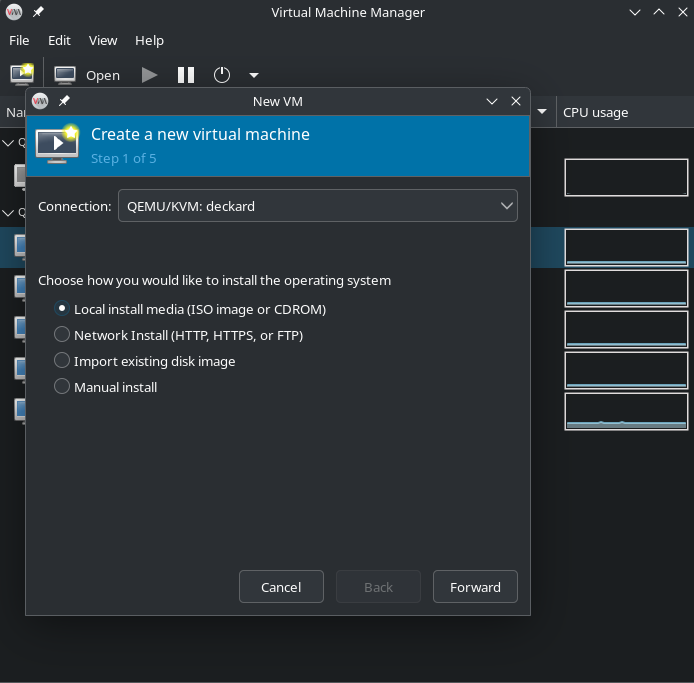
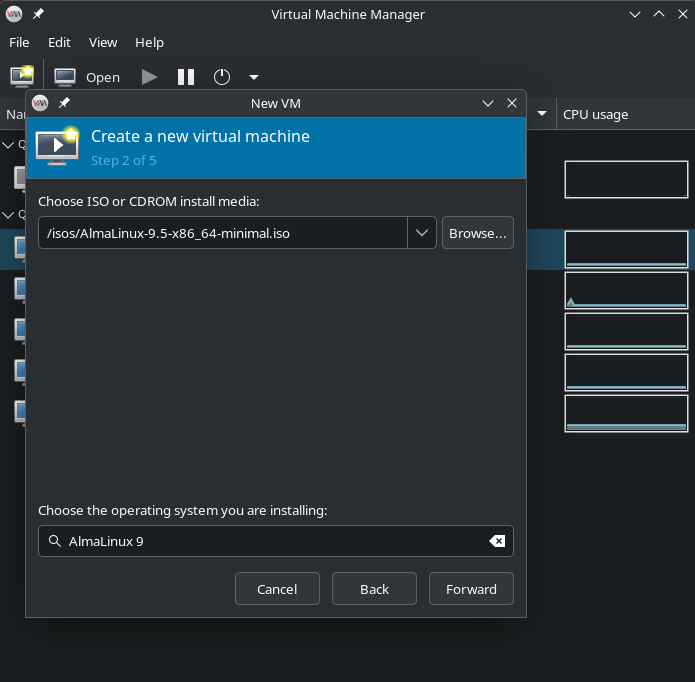
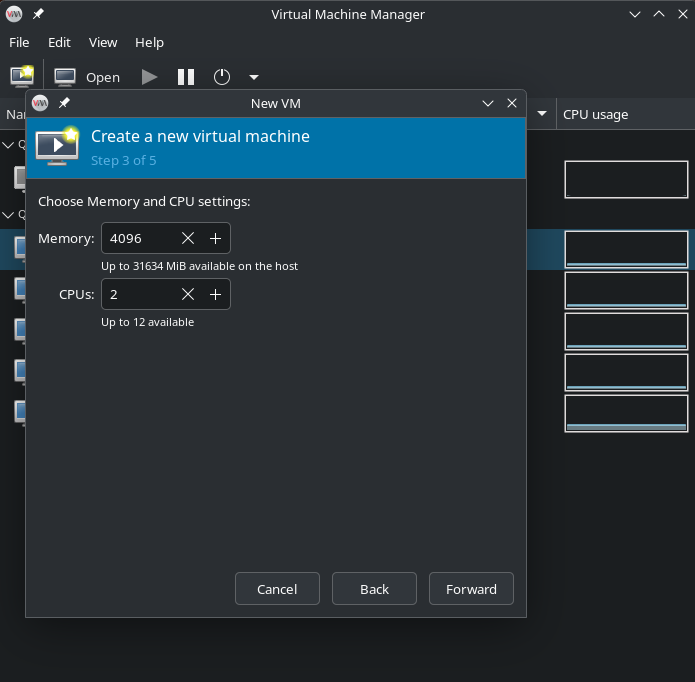
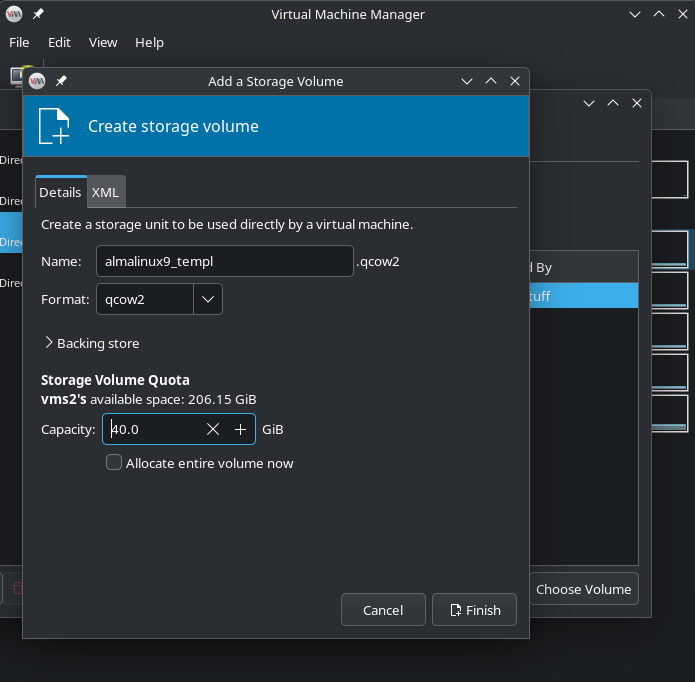
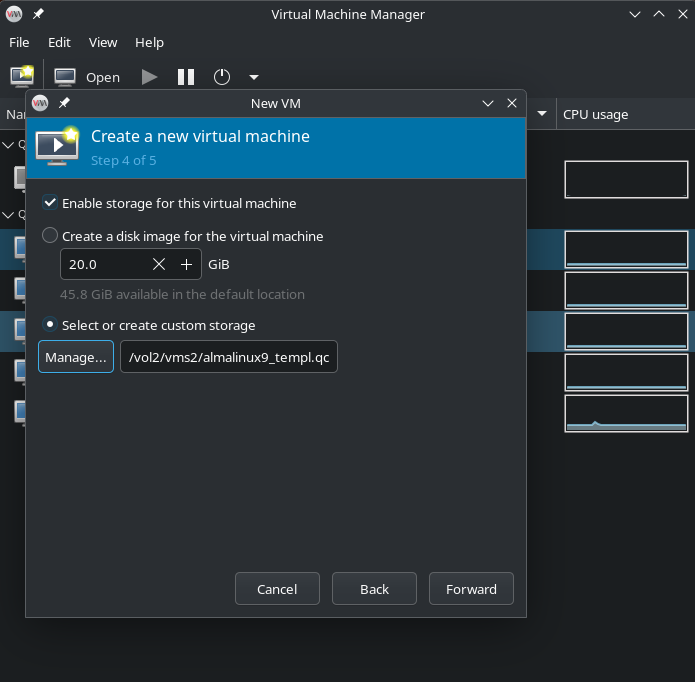
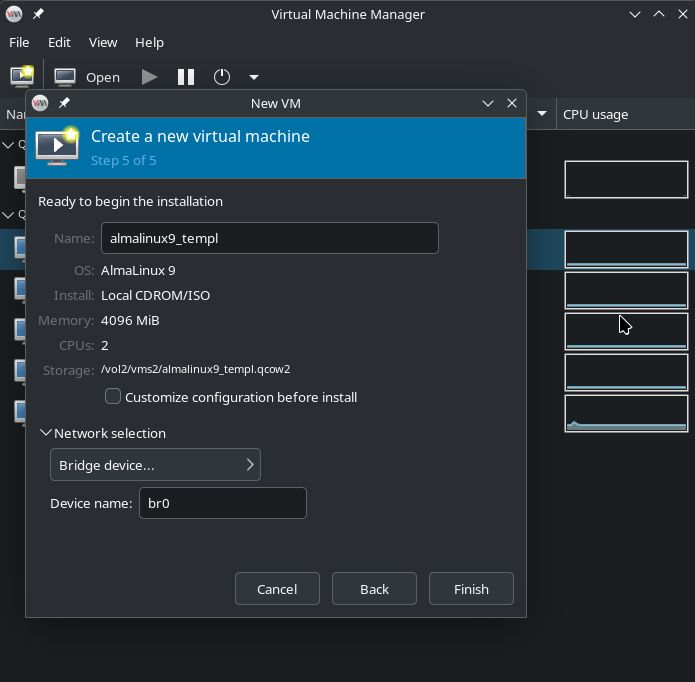
Note that this template has a base storage size of 40GB, which in most cases is more than enough space. If an operating system with more space is required, a different template will need to be created.
Once the installation begins, I select the most basic operating system options while also creating a local user account with administrator privileges.
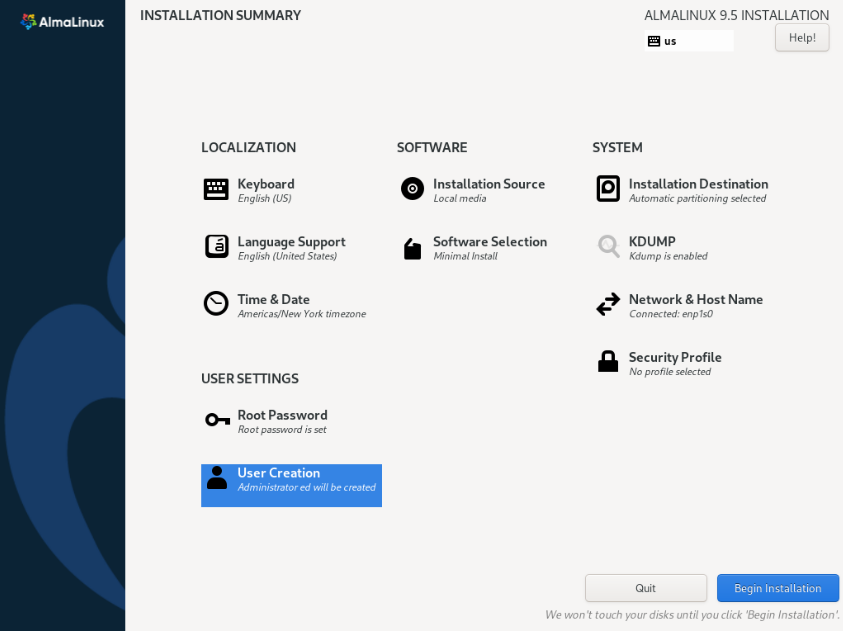
Then, once the operating system installation is complete, I shut down the template virtual machine, making sure in boot options that it does not start when the host boots up.
To create a new virtual machine, I run this custom bash shell script on the virtual host.
#!/bin/bash
#
# This script can be used to create a new AlmaLinux KVM VM from existing templ and .qcow2 file
echo
echo ">> What is the name of the new virtual machine? "
read -r VMNAME
cd /vol2/vms2 || exit
cp almalinux9_templ.qcow2 /home/vms/"$VMNAME".qcow2
# Create the VM via import of existing .qcow2 copied above
virt-install --name "$VMNAME" --memory 4096 --vcpus 2 --disk /home/vms/"$VMNAME".qcow2 --import --os-variant almalinux9 --wait 1
The very basic virt-install command in the above script is thus:
virt-install --name almatest --memory 4096 --vcpus 2 --disk /home/vms/almatest.qcow2 --import --os-variant almalinux9 --wait 1
The above virt-install options meaning:
almatest = name of new VM
4096 = virtual memory allocation
2 = number of virtual CPUs
/home/vms/almatest.qcow2 = new copied .qcow2 file from template
almalinux9 = Version of operating system
1 = the number of minutes to wait for the new VM to be created before exiting the import
One thing I noticed is that if you attempt to create a new virtual machine using the same name it will halt and display this output (which is great):
ERROR Disk /home/vms/almatest.qcow2 is already in use by other guests ['almatest']. (Use --check path_in_use=off or --check all=off to override)
When the new virtual machine is created using the template and script, I power it up, and continue with the normal post-provision configurations (hostname, network, etc).
All virt-install command documentation can be found here (where I found my example) and here.
If you have any questions or comments, please feel free to send me an email noted in my About page.